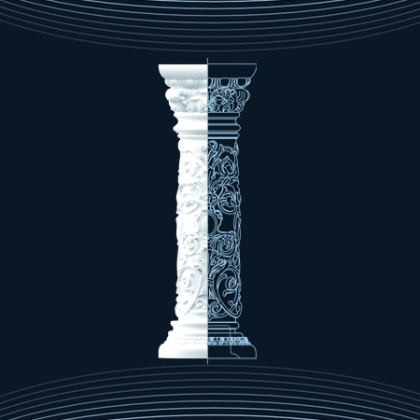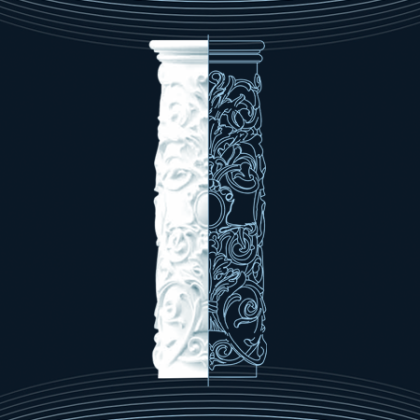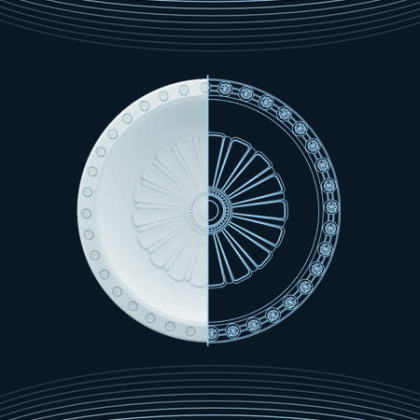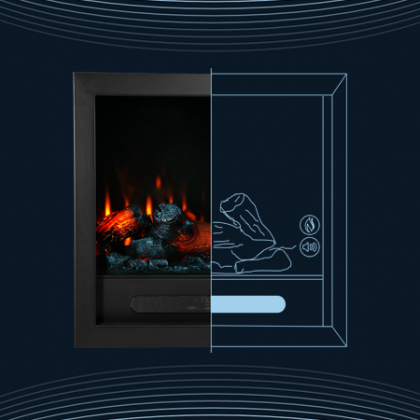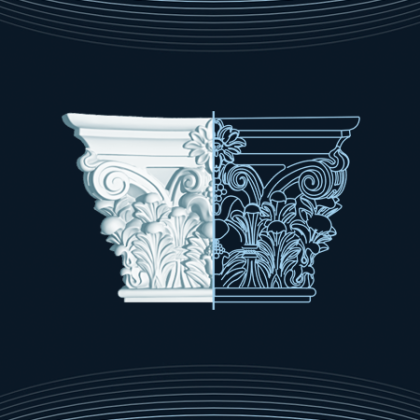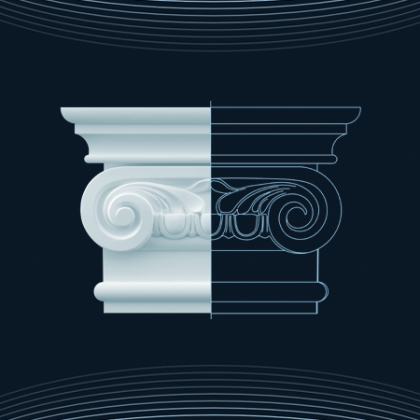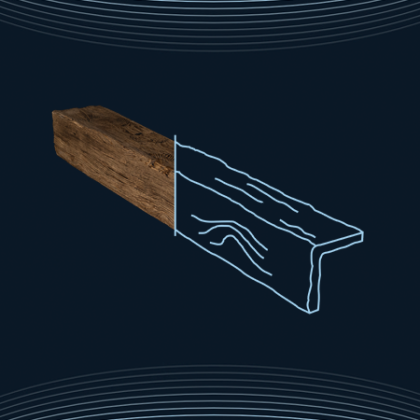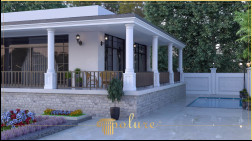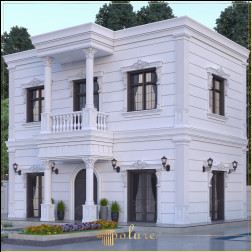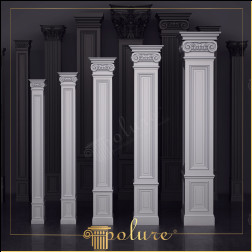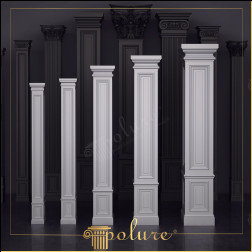698 - The Most Trendy Exterior Villa Designs
Villa Exterior Design with Neoclassical Polyurethane Products Bring Elegance and Durability Together Neoclassical style architecture allows reinterpre
The used products!697 - The Most Trendy Exterior Villa Designs
Villa Exterior Design with Neoclassical Polyurethane Products Bring Elegance and Durability Together Neoclassical style architecture allows reinterpre
The used products!696 - The Most Trendy Exterior Villa Designs
Villa Exterior Design with Neoclassical Polyurethane Products Bring Elegance and Durability Together Neoclassical style architecture allows reinterpre
The used products!695 - Aesthetics and Elegance with Polyurethane Column Capital, Jamb and Eaves Molding in Neoclassical Villa Design
Neoclassical villa designs offer a timeless aesthetic by combining the elegance of classical architecture with modern structures. Polyurethane columns
The used products!694 - Aesthetics and Elegance with Polyurethane Column Capital, Jamb and Eaves Molding in Neoclassical Villa Design
Neoclassical villa designs offer a timeless aesthetic by combining the elegance of classical architecture with modern structures. Polyurethane columns
The used products!693 - Aesthetics and Elegance with Polyurethane Column Capital, Jamb and Eaves Molding in Neoclassical Villa Design
Neoclassical villa designs offer a timeless aesthetic by combining the elegance of classical architecture with modern structures. Polyurethane columns
The used products!692 - Aesthetics and Elegance with Polyurethane Column Capital, Jamb and Eaves Molding in Neoclassical Villa Design
Neoclassical villa designs offer a timeless aesthetic by combining the elegance of classical architecture with modern structures. Polyurethane columns
The used products!691 - Stylish and Classical Touches with Polyurethane Column Column Head, Jamb and Eaves Molding in Veranda Decoration
Polyurethane columns, column heads, jamb details and eave moldings used in veranda design give an elegant and classic air to the exterior of the build
The used products!690 - Stylish and Classical Touches with Polyurethane Column Column Head, Jamb and Eaves Molding in Veranda Decoration
Polyurethane columns, column heads, jamb details and eave moldings used in veranda design give an elegant and classic air to the exterior of the build
The used products!688 - Aesthetic Touches with Polyurethane Column and Jamb Models in Neoclassical Exterior Decoration
Neoclassical architecture combines the elegance of the past with modern building technologies, offering a prestigious and eye-catching appearance in e
The used products!687 - Aesthetic Touches with Polyurethane Column and Frame Models in Neoclassical Exterior Decoration
Neoclassical architecture combines the elegance of the past with modern building technologies, offering a prestigious and eye-catching appearance in e
The used products!686 - Neoclassical Exterior Decoration Polyurethane Corinthian Column Head Jamb and Eaves Molding Usage
Neoclassical architecture is a design concept that combines classical and modern elements, with aesthetics and elegance at the forefront. The most imp
The used products!685 - The Most Trendy Exterior Villa Designs
Villa Exterior Design with Neoclassical Polyurethane Products Bring Elegance and Durability Together Neoclassical style architecture allows reinterpre
The used products!676 - 60 cm Polyurethane Plaster Columns Ionic Doric Corinthian Plaster Capitals Grooved and Panel Column Models
60 cm Polyurethane Plaster Columns Ion Doric and Corinthian Plaster Heads with Grooved and Panel Column Models Classical Elegance for Monumental Struc
The used products!675 - 40 cm Polyurethane Plaster Columns Ionic Doric Corinthian Plaster Capitals Grooved and Panel Column Models
40 cm Polyurethane Plaster Columns Ion Doric and Corinthian Plaster Heads with Grooved and Panel Column Models Monumental Interpretation of Classical
The used products!674 - 30 cm Polyurethane Plaster Columns Ionic Doric Corinthian Plaster Capitals Grooved and Panel Column Models
30 cm Polyurethane Plaster Columns Ion Doric and Corinthian Plaster Headings with Grooved and Panel Column Models Large-Scale Interpretation of Classi
The used products!673 - 20 cm Polyurethane Plaster Columns Ionic Doric Corinthian Plaster Capitals Grooved and Panel Column Models
20 cm Polyurethane Plaster Columns Ion Doric and Corinthian Plaster Heads with Grooved and Panel Column Models Modern Interpretation of Classical Arch
The used products!672 - Polyurethane Plaster Columns Ion Plaster Heads and Grooved Column Models
Polyurethane Plaster Columns Ionic Plaster Headings and Grooved Column Models Modern Interpretation of Classical Architecture Combining the elegance a
The used products!671 - Polyurethane Plaster Columns Ion Plaster Heads and Panel Column Models
For designers and architects who want to keep the elegance of classical architecture alive in today's buildings, polyurethane material offers an i
The used products!670 - Polyurethane Plaster Columns Dor Plaster Headings and Panel Column Models
Polyurethane plaster columns are known as semi-columns and are usually mounted on a wall and used for decorative purposes. Polyurethane material is an
The used products!Exterior decoration - Exterior decoration coating models - Polyurethane jamb
Transform Your Exterior with Polyurethane Decorations Enhance the beauty and value of your buildings with the innovative and sustainable choice of polyurethane exterior decorations. Known for its durability and versatility, polyurethane is revolutionizing architectural designs with a variety of models suited for any style. Why Choose Polyurethane? Polyurethane stands out for its lightweight, durability, and ability to mimic traditional materials like wood and stone, offering a cost-effective yet stylish alternative for exterior decoration. Popular Models for Every Design Decorative Brackets and Corbels: Add a touch of elegance and support with designs ranging from classical to contemporary. Column and Post Wraps: Transform your columns and posts into striking features that enhance your building's facade. Molding and Trim: Accentuate your exterior walls, doors, and windows with intricate or simple designs. Balustrades and Railings: Combine functionality with aesthetic appeal for your balconies, porches, and stairways. Decorative Panels and Louvers: Add depth and interest to flat surfaces, enriching your building's exterior with texture and design. Customization and Sustainability Benefit from the customization possibilities of polyurethane decorations to meet your unique architectural requirements, while also embracing a sustainable choice that minimizes environmental impact. Conclusion With polyurethane exterior decorations, transform your property into a masterpiece of durability, style, and sustainability. Embrace the future of building design with this innovative material.

Polyurethane exterior decoration refers to the use of polyurethane materials for decorating the outside of buildings or structures. This can include features like trim, molding, and other decorative elements made from polyurethane, a type of durable plastic.
Polyurethane exterior decoration refers to the use of polyurethane materials for decorative and protective purposes on the exteriors of buildings. Polyurethane, a type of polymer, is known for its durability, resistance to weather conditions, and versatility in mimicking various textures and materials. This makes it an ideal choice for enhancing the aesthetic appeal and longevity of building exteriors. One of the main advantages of using polyurethane for exterior decoration is its ability to withstand harsh environmental conditions without deteriorating. It resists fading, cracking, and peeling, which are common issues with other materials exposed to the elements. Furthermore, polyurethane can be molded into a wide range of designs, from intricate patterns to realistic imitations of wood, stone, and other natural materials, offering endless possibilities for architectural creativity. Polyurethane is used in various exterior decoration applications, including trim, moldings, door and window frames, and decorative panels. It can also be applied as a protective coating on surfaces to enhance their durability and appearance. In addition, polyurethane foam is often used for insulation purposes, improving the energy efficiency of buildings. While polyurethane offers numerous benefits for exterior decoration, it is important to consider its environmental impact. The production and disposal of polyurethane materials can release harmful chemicals into the environment. However, advancements in technology have led to the development of more eco-friendly polyurethane options, reducing the ecological footprint of these products. Polyurethane exterior decoration provides a durable, versatile, and aesthetically pleasing option for enhancing building exteriors. Its resistance to environmental factors, combined with the ability to mimic various materials, makes it a popular choice among architects and builders. By selecting eco-friendly polyurethane products, the environmental impact of these decorations can be minimized, making it a sustainable choice for modern construction projects.Polyurethane Exterior Decoration
Benefits of Polyurethane Exterior Decoration
Applications of Polyurethane in Exterior Decoration
Environmental Considerations
Conclusion
Exterior decorations have played a significant role throughout history, reflecting cultural, societal, and individual expressions across various periods and locations.
Exterior decoration has played a pivotal role in human history, serving not only as a means of expressing aesthetic preferences but also as a reflection of cultural, social, and technological advancements. From the intricate facades of ancient temples to the sleek designs of modern skyscrapers, the evolution of exterior decoration mirrors the changing tastes, technologies, and materials of different eras. In ancient times, exterior decoration was heavily influenced by religious and mythological themes. The Egyptians adorned their temples with carvings and paintings that depicted gods and pharaohs, believing these decorations to be a bridge to the divine. Similarly, the Greeks and Romans used sculptures and friezes to not only beautify their buildings but also to tell stories and celebrate victories. During the Middle Ages, exterior decoration became a symbol of power and devotion. Gothic architecture, with its towering spires and intricate stone carvings, sought to reach the heavens and inspire awe. The use of stained glass windows added a dimension of color and light, turning buildings into spiritual experiences. The Renaissance marked a return to classical ideals, with architects incorporating Greco-Roman elements into their designs. This period saw the emergence of symmetry, proportion, and the use of decorative columns and pediments. As we moved into the Baroque and Rococo periods, exterior decoration became even more elaborate, featuring ornate details, curves, and vibrant colors. In the modern era, advancements in technology and materials have continued to shape exterior decoration. The use of steel and glass in the 20th century led to the creation of skyscrapers and the minimalist aesthetic of modernism. Today, sustainability and integration with the natural environment have become key considerations, leading to innovative designs that blend form, function, and eco-consciousness. Throughout history, exterior decoration has served as a canvas for human expression, reflecting the aspirations, values, and technological prowess of societies. From the ancient pyramids to contemporary eco-friendly buildings, the evolution of exterior decoration continues to tell the story of humanity's creative and cultural journey.The Place of Exterior Decoration in History
Ancient Civilizations
The Middle Ages
Renaissance and Beyond
Modern Times
Conclusion
Polyurethane exterior decorations have several properties: they are durable, weather-resistant, and maintain their appearance over time. They can mimic the look of wood or other materials, are lightweight, and easy to install. These decorations also offer good insulation and are resistant to fading and peeling.
Polyurethane has become a popular choice for exterior decoration due to its remarkable properties and versatility. This synthetic material offers a wide range of benefits for outdoor applications, making it an ideal choice for architects, designers, and homeowners alike. Below, we explore some of the key properties of polyurethane that make it suitable for exterior decoration. One of the most significant advantages of polyurethane is its durability. It is resistant to weathering, including the harmful effects of UV radiation, moisture, and temperature fluctuations. This resilience makes polyurethane finishes and decorations last longer than those made from more traditional materials, reducing the need for frequent replacements or repairs. Polyurethane is highly flexible, which allows it to be molded into a wide variety of shapes and designs. This flexibility is particularly beneficial for creating intricate details and unique architectural elements for exterior decoration. Additionally, its ability to expand and contract with temperature changes without cracking or warping further enhances its suitability for outdoor use. Water resistance is another key feature of polyurethane that makes it ideal for exterior applications. It effectively repels water, preventing damage and deterioration caused by moisture. This property is especially important in regions with high humidity or frequent rainfall, helping to preserve the integrity and appearance of exterior decorations over time. Due to its durability and resistance to various environmental factors, polyurethane requires minimal maintenance. It does not need frequent painting or sealing, and it is easy to clean, often only requiring a simple wipe down with a damp cloth. This low-maintenance aspect makes it a cost-effective and convenient option for exterior decoration. Aside from its functional properties, polyurethane also offers aesthetic flexibility. It can be finished in a wide range of colors and textures, from glossy to matte, allowing for complete customization of exterior decorations to match any architectural style or personal preference. This versatility ensures that polyurethane can meet both the practical and aesthetic requirements of any exterior decoration project. In conclusion, the properties of polyurethane make it an excellent material for exterior decoration. Its durability, flexibility, water resistance, low maintenance, and aesthetic appeal offer a compelling combination of benefits. Whether for residential or commercial properties, polyurethane decorations can enhance the beauty and longevity of buildings, making it a preferred choice for many.Polyurethane Exterior Decoration Properties
Durability
Flexibility
Water Resistance
Low Maintenance
Aesthetic Appeal
Are the applications of polyurethane for outdoor decoration distinct?
Polyurethane, a versatile polymer, has become a staple in the world of exterior decoration due to its durability, flexibility, and aesthetic appeal. Its applications in exterior decoration are diverse, catering to various needs and preferences. This article explores the separated usage areas of polyurethane in exterior decoration. One of the primary uses of polyurethane in exterior decoration is as a protective coating. It is applied over materials like wood, metal, and concrete to protect them from weather elements, UV radiation, and corrosion. This not only prolongs the life of these materials but also maintains their aesthetic appeal over time. Polyurethane is widely used in the creation of architectural mouldings for exterior decoration. These include window trims, door surrounds, columns, and balustrades. Polyurethane mouldings are preferred for their lightweight, ease of installation, and resistance to rot, insects, and moisture. The durability and weather resistance of polyurethane make it an ideal material for outdoor furniture. It can be molded into various shapes and designs, offering both functionality and aesthetic appeal. Polyurethane-coated furniture is known for its longevity and ability to withstand harsh outdoor conditions. For exterior flooring, polyurethane offers solutions that are not only durable but also aesthetically pleasing. It is used in decking, patios, and walkways, providing a slip-resistant surface that is easy to maintain. Polyurethane flooring can mimic the look of natural materials, offering a range of design possibilities. The usage areas of polyurethane in exterior decoration are indeed separated and diverse, covering everything from protective coatings to outdoor furniture. Its versatility, durability, and aesthetic flexibility make it an invaluable material in the realm of exterior decoration, catering to a wide range of applications and design preferences.Polyurethane in Exterior Decoration: Diverse Applications
Protective Coatings
Architectural Mouldings
Outdoor Furniture
Flooring Solutions
Conclusion
Models of outdoor decorations made of polyurethane.
Polyurethane, a versatile and durable material, has become increasingly popular in the field of exterior decoration. Its resistance to weather conditions, including UV rays and moisture, makes it an ideal choice for enhancing the aesthetic appeal of buildings. This article explores the various models of polyurethane exterior decorations that are revolutionizing architectural designs. Before delving into the models, it is crucial to understand the advantages of polyurethane. Its lightweight nature eases installation processes, while its durability ensures long-lasting beauty. Furthermore, polyurethane is capable of mimicking the appearance of more traditional materials like wood and stone, providing a cost-effective alternative without compromising on style. One of the significant benefits of polyurethane decorations is their ability to be customized. Whether it's a specific size, shape, or finish, manufacturers can tailor products to meet unique architectural requirements. Additionally, as sustainability becomes increasingly important, polyurethane is recognized for its energy efficiency and minimal environmental impact compared to traditional materials. In conclusion, polyurethane exterior decoration models offer a blend of aesthetic appeal, durability, and versatility. As the demand for innovative and sustainable building materials grows, polyurethane is set to play a pivotal role in the future of exterior decoration. Whether for residential or commercial properties, these models can significantly enhance the architectural beauty and value of any building.Polyurethane Exterior Decoration Models
Advantages of Polyurethane in Exterior Decoration
Popular Polyurethane Exterior Decoration Models
Customization and Sustainability
Conclusion
Yes, polyurethane exterior decoration can be used on outside walls.
Polyurethane has emerged as a versatile and durable material for exterior decoration, offering numerous benefits for enhancing the aesthetics and longevity of building exteriors. This synthetic resin is known for its robustness, making it an ideal choice for outdoor applications, including exterior walls. One of the primary advantages of using polyurethane for exterior walls is its exceptional durability. It is resistant to weather changes, moisture, and UV rays, ensuring that decorations maintain their appearance over time without fading or deteriorating. Furthermore, polyurethane is lightweight, which simplifies the installation process and reduces the load on structural elements of buildings. Another benefit is its versatility in design. Polyurethane can be molded into various shapes and designs, allowing for a wide range of decorative options. From intricate patterns to sleek, modern designs, polyurethane can cater to different architectural styles, enhancing the building's curb appeal. While polyurethane offers numerous advantages, there are considerations to keep in mind. Proper installation is crucial to ensure that the decorations are securely attached and sealed to prevent moisture ingress. Additionally, although polyurethane is durable, it requires regular maintenance to keep it looking its best, including cleaning and occasional resealing to protect against the elements. In conclusion, polyurethane exterior decoration can significantly enhance the aesthetic appeal and durability of exterior walls. Its versatility, durability, and ease of maintenance make it a compelling choice for homeowners and architects alike. By considering the proper installation and maintenance practices, polyurethane decorations can provide a long-lasting and attractive solution for exterior wall decoration.Using Polyurethane for Exterior Wall Decoration
Advantages of Polyurethane for Exterior Walls
Considerations for Using Polyurethane on Exterior Walls
Can you paint polyurethane exterior decorations?
Polyurethane is a popular choice for exterior decoration due to its durability and resistance to various environmental factors. However, homeowners and decorators often wonder if it's possible to paint over polyurethane surfaces to refresh their appearance or change the color to match new design schemes. The answer is yes, but there are important steps to follow to ensure the paint adheres properly and the finish lasts. Before painting polyurethane surfaces, thorough preparation is crucial. Start by cleaning the surface with a degreaser or a mild detergent to remove any dirt, grease, or grime. After cleaning, lightly sand the surface with fine-grit sandpaper to create a rougher texture that helps the new paint to adhere. Wipe away any dust with a tack cloth or a damp rag to ensure a clean surface for painting. Not all paints are suitable for use on polyurethane. Acrylic latex paint is often recommended due to its flexibility, durability, and ease of use. It's also important to apply a primer specifically designed for use on plastic or glossy surfaces. This will further ensure that the paint sticks to the polyurethane surface. When painting polyurethane, use a high-quality brush or roller to apply the paint evenly. If using a brush, opt for one with synthetic bristles, as they work better with water-based paints like acrylic latex. Apply the paint in thin layers, allowing each layer to dry completely before applying the next. This will help avoid drips or uneven coverage. Once the paint has dried and cured, it's important to maintain the surface to ensure its longevity. Clean painted polyurethane surfaces with mild soap and water, avoiding abrasive cleaners or scrubbers that can damage the paint. With proper care, painted polyurethane decorations can last for many years, maintaining their beauty and protection against the elements. In conclusion, polyurethane exterior decorations can indeed be painted, allowing homeowners to update their outdoor spaces easily. By following the proper preparation steps, choosing the right paint, and applying it carefully, you can achieve a durable and attractive finish that revitalizes your polyurethane decorations.Can Polyurethane Exterior Decoration Be Painted?
Preparation is Key
Choosing the Right Paint
Application Tips
Maintenance and Care
Conclusion
Applying polyurethane for exterior decoration involves a few steps. First, make sure the surface is clean, dry, and smooth. Sand the area if necessary. Then, apply a thin coat of polyurethane with a brush, following the grain of the wood. Let it dry as per the instructions on the can. After it's dry, lightly sand the surface again and clean off any dust. Apply a second coat. For best results, you might want to apply a third coat, repeating the sanding and cleaning process before application. Always work in a well-ventilated area and wear protective gear.
How to Apply Polyurethane for Exterior Decoration
Applying polyurethane to exterior surfaces can enhance their appearance and protect them from the elements. Here’s a step-by-step guide to help you achieve the best results.
Materials Needed
- Exterior-grade polyurethane
- Fine-grit sandpaper
- Clean cloth
- Natural bristle brush or a foam brush
- Mineral spirits (if using oil-based polyurethane)
Preparation
- Begin by sanding the surface lightly with fine-grit sandpaper to ensure it’s smooth.
- Wipe the surface clean with a cloth to remove any dust.
- If you’re using oil-based polyurethane, dampen a cloth with mineral spirits and wipe the surface to ensure it’s clean.
Application
- Stir the polyurethane gently to avoid creating bubbles. Do not shake the can.
- Using a natural bristle brush or a foam brush, apply a thin coat of polyurethane. Brush in the direction of the grain to achieve a smooth finish.
- Allow the first coat to dry completely, following the manufacturer’s recommended drying time.
- Once dry, lightly sand the surface again with fine-grit sandpaper to ensure the next coat adheres well.
- Wipe the surface clean of any dust.
- Apply a second coat of polyurethane, using the same method as before.
- For additional protection, a third coat can be applied, especially for surfaces exposed to harsh weather conditions.
Tips for Success
- Always work in a well-ventilated area to ensure proper drying and to avoid inhaling fumes.
- For outdoor projects, check the weather forecast to avoid rain or excessive humidity during application and drying times.
- Wear gloves to protect your hands, especially when using oil-based polyurethane.
By following these steps, you can effectively apply polyurethane to exterior surfaces, providing them with a beautiful finish and long-lasting protection.
Polyurethane exterior decoration is more durable and resistant to weather compared to styrofoam exterior decoration, which is lighter and less expensive but not as sturdy or long-lasting.
Exterior decoration plays a pivotal role in defining the aesthetic and durability of buildings. Among the materials used for this purpose, polyurethane and styrofoam are popular choices. Each offers unique benefits and drawbacks, making them suitable for different applications. Polyurethane is a type of plastic material known for its strength, flexibility, and resistance to weather conditions. In exterior decoration, it is often used in moldings, trims, and other architectural details. Polyurethane decorations are durable, water-resistant, and can mimic the appearance of wood, stone, or other materials. Styrofoam, technically known as expanded polystyrene (EPS), is a lightweight, foam-like material. It is commonly used for decorative purposes in exterior settings due to its ease of shaping and carving. Styrofoam decorations are cost-effective and provide good insulation. However, they are less durable than polyurethane and can be susceptible to damage from physical impact or harsh weather conditions. The choice between polyurethane and styrofoam for exterior decoration depends on the specific needs of the project, including budget, durability requirements, and aesthetic preferences. While polyurethane offers a more durable and high-quality finish, styrofoam can be an effective solution for those looking for a cost-effective and easily customizable option.Difference Between Polyurethane and Styrofoam Exterior Decoration
Introduction
Polyurethane Exterior Decoration
Styrofoam Exterior Decoration
Key Differences
Conclusion
Polyurethane exterior decoration and plaster exterior decoration differ mainly in material composition and properties. Polyurethane is a synthetic, durable, and flexible material, while plaster is a mixture of lime, sand, and water, offering a traditional, porous finish.
Difference Between Polyurethane and Plaster Exterior Decoration
When it comes to exterior decoration, both polyurethane and plaster offer unique benefits and characteristics. Choosing the right material depends on the specific needs of your project, including durability, aesthetic appeal, and installation requirements.
Polyurethane Exterior Decoration
Polyurethane is a type of plastic that can be either rigid or flexible, making it a versatile option for exterior decoration. It is known for its durability and resistance to weather conditions, including moisture, temperature changes, and UV rays. Polyurethane decorations are lightweight, which makes them easy to install. They can mimic the appearance of more traditional materials like wood or stone, providing an aesthetic appeal without the maintenance requirements of natural materials.
Plaster Exterior Decoration
Plaster, on the other hand, is a traditional material that has been used for centuries in building and decoration. It is made from a mixture of water, gypsum, lime, or cement, which is applied wet and hardens to a very durable surface. Plaster is highly customizable in terms of shapes and textures, allowing for unique decorative elements. It offers a classic look that adds charm and character to buildings. However, plaster can be more susceptible to weather damage and may require more maintenance over time.
Key Differences
- Durability: Polyurethane tends to be more durable and resistant to environmental factors compared to plaster.
- Maintenance: Polyurethane requires less maintenance due to its resistance to weathering, while plaster may need regular repairs and repainting.
- Installation: Polyurethane decorations are generally easier and quicker to install due to their lightweight nature.
- Aesthetic: Plaster offers a traditional and classic appearance, while polyurethane can be designed to mimic various materials.
In conclusion, both polyurethane and plaster have their place in exterior decoration. The choice between them should be based on the specific requirements of your project, considering factors such as durability, maintenance, installation, and aesthetic preferences.
Polyurethane precast is made from a type of plastic that's strong and lightweight. GRC precast, which stands for Glassfibre Reinforced Concrete, is made from a mix of cement and glass fibers, making it very tough and durable.
Understanding the differences between polyurethane precast and Glassfibre Reinforced Concrete (GRC) precast is essential for architects, builders, and developers who aim to select the most appropriate material for their construction projects. Both materials offer unique advantages and have specific applications where they excel. Polyurethane precast refers to architectural elements and components made from polyurethane, a type of polymer. This material is known for its lightweight, flexibility, and durability. Polyurethane precast products are often used for decorative features, such as moldings, trims, and façade elements, due to their ability to replicate fine details and textures. GRC precast, or Glassfibre Reinforced Concrete precast, combines concrete with glass fiber reinforcements. This composition results in a material that is both strong and lightweight, making it suitable for a wide range of architectural applications. GRC precast is often used for façade panels, cladding, and outdoor furniture due to its durability and resistance to environmental factors. Choosing between polyurethane precast and GRC precast depends on the specific requirements of a project. For decorative indoor elements, polyurethane precast may be the better choice due to its lightweight and detailed finishes. For outdoor and structural applications, GRC precast offers the necessary strength and durability. Understanding these differences enables informed decision-making for successful project outcomes.Difference Between Polyurethane Precast and GRC Precast
What is Polyurethane Precast?
What is GRC Precast?
Key Differences
Conclusion
Prices for exterior decoration with polyurethane.
Polyurethane exterior decorations have become increasingly popular due to their durability, aesthetic appeal, and versatility. These decorations can range from trim and molding to faux stone panels and more. When considering the cost of polyurethane exterior decorations, several factors come into play. The price of polyurethane exterior decorations is influenced by several factors, including: The prices for polyurethane exterior decorations can vary widely based on the factors mentioned above. On average, homeowners might expect to spend anywhere from $5 to $20 per linear foot for standard trim and molding. For more elaborate pieces, such as faux stone panels or custom designs, prices can range from $10 to $40 per square foot, depending on the complexity and quality of the material. When selecting polyurethane exterior decorations, it's essential to consider both the aesthetic you wish to achieve and the longevity of the material. Investing in high-quality, durable polyurethane can save money in the long run by reducing the need for replacements or repairs. Additionally, working with a reputable supplier or installer can ensure that you receive a fair price and high-quality workmanship. While the initial cost of polyurethane exterior decorations may seem high, their durability, ease of maintenance, and aesthetic appeal make them a worthwhile investment for many homeowners. By understanding the factors that influence the price and choosing the right products and professionals, you can enhance your home's exterior with beautiful, long-lasting decorations.Polyurethane Exterior Decoration Prices
Factors Influencing Prices
Average Price Range
Choosing the Right Polyurethane Decorations
Conclusion
 English
English
 Romanian
Romanian





